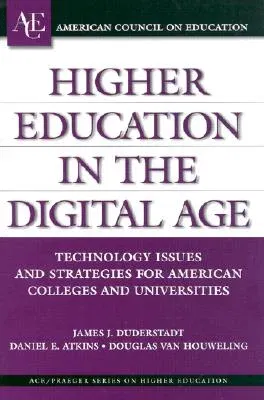James J Duderstadt
(Author)Higher Education in the Digital Age: Technology Issues and Strategies for American Colleges and UniversitiesHardcover, 30 December 2002

Qty
1
Turbo
Ships in 2 - 3 days
In Stock
Free Delivery
Cash on Delivery
15 Days
Free Returns
Secure Checkout

Part of Series
Ace/Praeger Higher Education
Part of Series
ACE/Praeger Series on Higher Education
Part of Series
American Council on Education/Praeger Series on Higher Educa
Print Length
304 pages
Language
English
Publisher
Rowman & Littlefield Publishers
Date Published
30 Dec 2002
ISBN-10
1573565202
ISBN-13
9781573565202
Description
Product Details
Book Format:
Hardcover
Country of Origin:
US
Date Published:
30 December 2002
Dimensions:
24.13 x
16.36 x
2.82 cm
ISBN-10:
1573565202
ISBN-13:
9781573565202
Language:
English
Location:
Westport, CT
Pages:
304
Publisher:
Series:
Weight:
603.28 gm